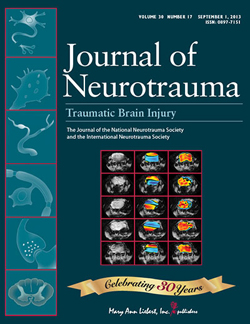Matt Kelso, Pharm.D., Ph.D., assistant professor of pharmacy practice, specializes in neuropharmacology, specifically the pathophysiology and treatment of traumatic brain injury (TBI).
Shadi Othman, Ph.D., assistant professor of biological systems engineering at the University of Nebraska-Lincoln, had modified an MRI scanner to measure the mechanical properties of tissue.
And almost as soon as they began talking, they saw where each could help the other.
 |
“Engineers think differently,” Dr. Kelso said. “It’s a great collaboration.”
The two researchers, and their labs, have experimented in using magnetic resonance technology to assess TBI in animal models, to promising results. Their study was featured this fall on the cover of the Journal of Neurotrauma.
Magnetic resonance elastography is a noninvasive process that assesses biological tissue’s mechanical properties. Pulses measure vibrations in soft material, from which its properties can be estimated. Compared to other technologies, MRE can detect tissue pathology at an earlier stage by quantifying the changes in tissue stiffness associated with diseases.
The process seems well-suited to TBI, Drs. Othman and Kelso said.
Traumatic brain injury is a diverse and complex injury affecting 1.7 million Americans a year. Although most people with TBI survive the injury, they often have permanent cognitive loss, behavioral issues and emotional disturbances.
“The underlying pathology varies so widely. That’s one of the reasons it’s so difficult to come up with a therapy,” Dr. Kelso said. “I’m hoping that we will gain a better understanding of the disease’s pathology through this technology and ultimately that it will lead to a diagnostic process that will help us determine the extent of brain injuries along a continuum of severity.”
If they’re successful, Dr. Kelso added, the MRE could help doctors come up with treatment and monitor how effective that treatment is.
The earlier doctors can determine the severity of a TBI, the better.
The UNMC-UNL collaboration is funded through an Engineering for Medicine initiative between the two campuses. The team is seeking more grant funding to continue its work.

Congratulations ! The McGoogan Library will have an online access to this journal starting in 2014.
Phenomenal collaboration that will ultimately lead to improved ability to look at patterns of recovery and treatment efficacy.